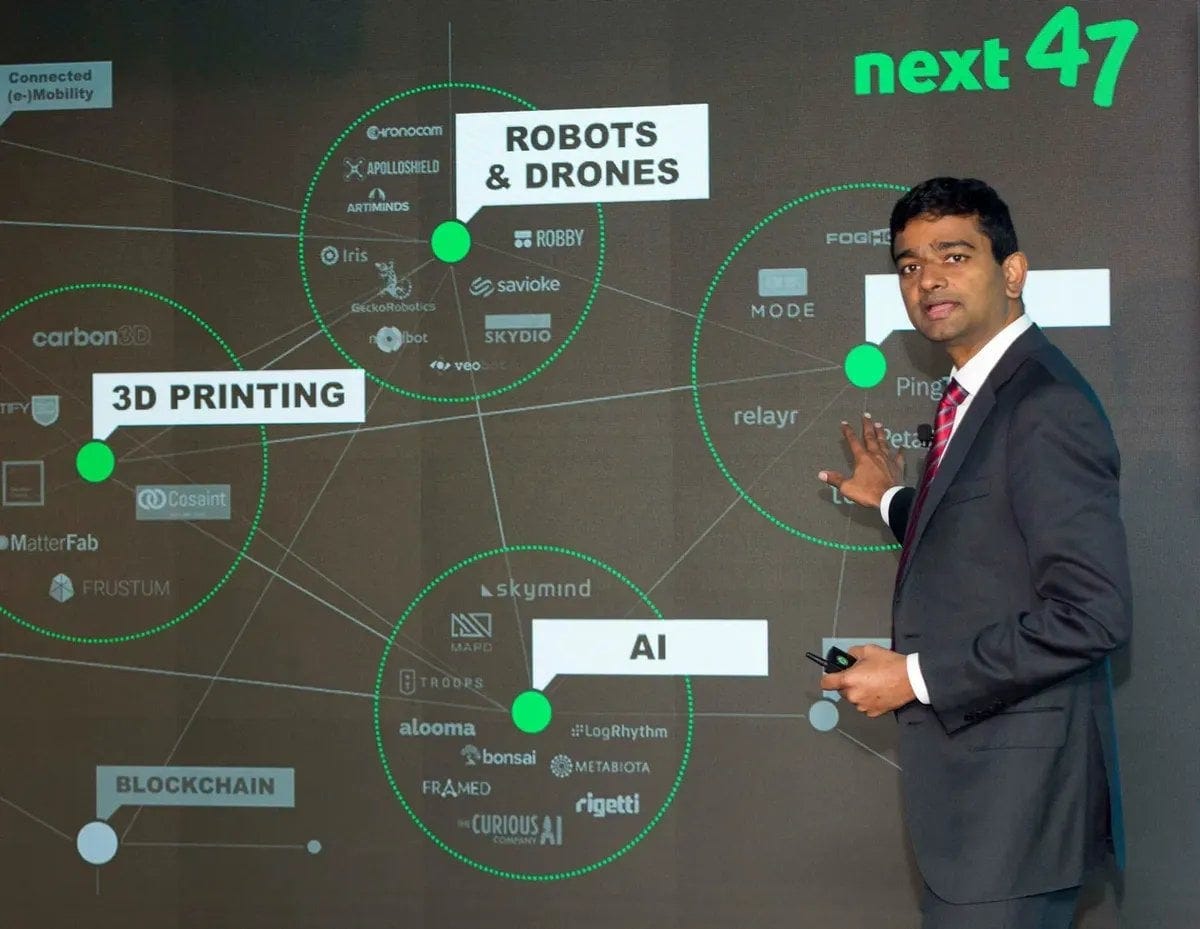Previously on Open Road Ventures: in the last episode of Venturing Insights, I shared my lessons so far from attending the Venture Institute by VC Lab. If you missed it, you can catch up here!
Connecting the dots of my career so far, I realized something: the best thing I can do is connect things.
People. Technologies. Trends. Dots. Emerging players with established ones. Startups with corporates. Ideas with execution.
And when I reflect on the most valuable work I’ve done—it all comes down to making the right connections happen.
Is that what makes a Superconnector?
Let’s find out.
1. What even is a Superconnector?
Not just a networker. Not just a LinkedIn power user. Not just the person who always knows someone.
📌 The Open Innovation Lookout 2025 Report defines Superconnectors as strategic nodes in the innovation ecosystem—not just facilitators, but accelerators of progress. Their role? Bridging gaps, mapping technological landscapes, and making sure the right collaborations happen at the right time.
Think of them as the hubs of a high-functioning network. Without them, innovation ecosystems are just loose clusters of players waiting for something to happen.
With them? Innovation moves faster, smarter, and with greater impact.
Superconnectors are not just helpful—they are essential. They accelerate innovation, de-risk collaborations, and ensure that ecosystems don’t just exist but thrive.
2. Why Open Innovation can’t function without Superconnectors
We’re in an era where no company, startup, or research institution can innovate alone.
Innovation today is cross-functional, cross-sector, and increasingly dependent on ecosystems of collaboration.
Superconnectors ensure that those ecosystems actually work.
‼️ What happens when they are missing?
Open Innovation programs stall. Startups can’t find the right corporate partners, corporates struggle to identify real innovation, and investors lack reliable deal flow.
Breakthroughs take longer to commercialize. Technologies sit in research labs, underfunded and underutilized.
High-potential collaborations fail. Different players operate with misaligned incentives, leading to friction rather than innovation.
✅ What happens when Superconnectors are present?
They turn scattered innovation efforts into structured, high-impact initiatives.
They translate between different stakeholders, ensuring that startups, corporates, investors, and academia can speak the same language.
They make the difference between a promising innovation ecosystem and one that actually delivers results.
The absence of Superconnectors can doom an innovation ecosystem. Their presence? A game-changer.
3. What separates a good networker from a great Superconnector?
Most people think being a great connector is about knowing a lot of people.
It’s not.
It’s about knowing how to connect the right people, at the right time, in the right way.
What makes them different from traditional networkers?
They don’t just introduce people, they create value. Every introduction has a purpose, aligning partners in ways that generate tangible results.
They are enablers of Open Innovation. Startups, corporates, universities, and research institutions operate in silos—Superconnectors break those silos down.
They reduce the cost and risk of innovation. By knowing the market, players, and incentives, they accelerate decision-making and prevent costly missteps.
Pattern Recognition → They see relationships others miss. They connect dots before the market does.
High-Trust Relationships → Their network isn’t just broad—it’s deep. When they make an introduction, people listen.
A Bias for Action → They don’t just talk about connections. They make them happen. Fast.
According to EQ Lab, the best Superconnectors aren’t just well-networked. They are highly selective in how they connect people.
Superconnectors.io puts it simply: They don’t collect contacts. They cultivate relationships.
LinkedIn insights confirm: The best deals, collaborations, and investments don’t happen by accident—they happen because someone strategically connected the dots.
4. The corporate blind spot: why this role is undervalued
Despite their value, Superconnectors often remain an undefined or underestimated role within organizations.
Most companies treat them as informal influencers rather than a strategic function.
⚠️ The result?
They rely on a handful of executives to play this role—until those people leave, and their networks leave with them.
They measure “activity” (networking events, introductions) instead of “impact” (partnerships formed, deals closed).
They assume that connections will happen naturally, rather than structuring them into their innovation strategies.
🕹️ What smart companies are doing instead:
Hiring for Superconnector roles—embedding them into Open Innovation teams.
Investing in platforms that track connections and relationships.
Structuring incentives to reward high-impact introductions.
Companies Leading the Way
Siemens’ Next47 platform actively integrates Superconnectors to bridge the gap between startups and corporate R&D teams.
Procter & Gamble’s Connect+Develop program institutionalizes Open Innovation by embedding internal and external Superconnectors to identify and integrate promising external technologies.
These companies aren’t leaving connections to chance. They’re building Superconnector-driven systems to make Open Innovation work.
5. Practical strategies to leverage Superconnectors
If you’re a startup, corporate, or investor, how do you find and engage with Superconnectors?
Map your ecosystem – Identify who the Superconnectors are in your industry.
Prioritize depth over breadth – Engage in mutual value creation, not just transactional networking.
Create feedback loops – Track which introductions actually lead to outcomes.
📊 Measuring the Impact of Superconnectors:
Time-to-deal acceleration – How fast do partnerships/investments happen?
Quality of introductions – Are they leading to action, or just conversations?
Innovation velocity – How quickly are new ideas validated, funded, and scaled?
Superconnectors aren’t just nice to have. They are the difference between innovation success and failure.
6. So… am I a Superconnector? (and are You?)
The more I dig into this, the more I realize:
I’ve been playing the role of a Superconnector for years without realizing it.
And chances are, so have you.
If you find yourself:
Introducing people across industries, not just inside your immediate circle.
Spotting opportunities others don’t see.
Accelerating deals, collaborations, or projects just by making the right connection at the right time.
…then you might already be a Superconnector.
How to Level Up as a Superconnector:
Be intentional. Don’t just introduce people—understand what they actually need.
Play long-term games. The best connections compound over time.
Track your impact. Start paying attention to which connections actually lead to outcomes.
Conclusion: the future of Innovation belongs to Superconnectors
The best ideas don’t win.
The best-funded startups don’t always succeed.
The best teams don’t always come together.
Unless someone makes the right connections happen.
So the real question isn’t just:
👉 Are you leveraging Superconnectors?
It’s this:
👉 Are you already a Superconnector yourself—and just didn’t realize it?
As usual, a soundtrack for you:








This is an eye opening post.
I’ve always enjoyed connecting people, but this year I am trying to be intentional about it, so this post has become a guiding source.